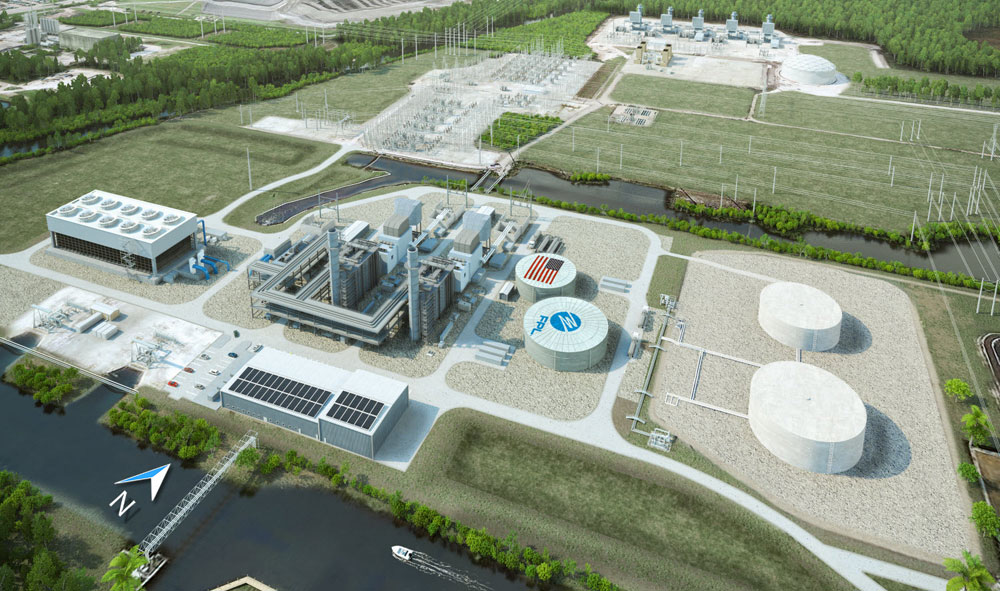By Deirdra Funcheon
Florida Center for Investigative Reporting
By cancelling a scheduled hearing this month, Gov. Rick Scott and his cabinet avoided voting on a new power plant until after Election Day. Scott, who is term-limited as governor, is in a tight race against incumbent Democrat Bill Nelson for U.S. Senate.
Media PartnerMiami Herald |
The power plant’s approval would benefit Florida Power and Light, Scott’s largest corporate campaign donor and a company in which the governor has invested as much as $500,000.
FPL applied in July 2017 for state permission to dismantle an aging natural gas power plant in Broward County and replace it with a new, more efficient facility. Under Florida law, Scott and his cabinet also function as the state’s Siting Board, which has final say in the approval of new power plants. The cabinet members are Chief Financial Officer Jimmy Patronis, Attorney General Pam Bondi and Agriculture Commissioner Adam Putnam.
The Siting Board was scheduled to hold a public hearing and vote on the proposed power plant during a cabinet meeting September 11, but Scott’s administration postponed the matter until the next such meeting on December 4, four weeks after the election. At that point, Scott will be a lame duck, either as an outgoing governor or as Florida’s senator-elect.
McKinley Lewis, the governor’s deputy communications director, told the Florida Center for Investigative Reporting that the Siting Board meeting and FPL vote were rescheduled because they conflicted with Rosh Hashanah. But the Jewish holiday didn’t prevent Scott and the cabinet from meeting that day in Tallahassee as the Clemency Board, which hears requests to restore ex-felons’ voting rights. Scott also campaigned in The Villages, in Sumter County, that day.
Under Florida law, the deadline for the Siting Board to vote on the proposed FPL plant was today. However, on September 21, FPL lawyer Gregory Munson said in a letter to the Department of Environmental Protection that the company would waive the deadline until December 11. Neither Munson nor an FPL spokesperson responded to requests for comment from FCIR.
The Sierra Club, which has fought the proposed plant from the start, objected to the missing of today’s deadline. “To date, Florida Power and Light and your administration have obscured or outright hid the Dania Beach plant from the community members most directly affected,” Julie Kaplan, a lawyer for the Sierra Club, wrote to the governor and cabinet members in a letter today.
Sierra Club has argued in regulatory filings that more fossil fuel-powered plants will exacerbate climate change, which is expected to cause sea-level rise of 14 to 26 inches in Southeast Florida by 2060, according to the bipartisan Southeast Florida Regional Climate Change Compact.
Now in the final stretch of his Senate campaign, Scott has faced heavy criticism of his environmental record. Scott’s administration directed government employees not to use the terms “climate change” and “global warming” in official documents, as FCIR first revealed in 2015. The governor has cut approximately $700 million from water management agencies that are responsible for protecting waterways. This month, Scott was booed out of a restaurant in Venice, on the Gulf coast, by protesters angry about a red tide crisis that is causing massive fish kills.
FPL has significant financial ties to Scott’s political career. Executives and employees of FPL and NextEra Energy, FPL’s corporate parent, have contributed $103,900 to Scott’s Senate campaign, according to federal campaign finance records. Jim Robo, NextEra Energy’s chairman and CEO, has himself given $5,400 to Scott’s Senate campaign. During Scott’s 2014 gubernatorial re-election bid, FPL kicked in $1 million to the governor’s political action committee, Let’s Get to Work PAC. Scott also owns as much as $500,000 in stock in NextEra Energy Partners, a subsidiary of NextEra Energy that invests in natural-gas infrastructure assets and wind and solar projects.
In Florida, public utilities are required by law to provide reliable, affordable energy service. FPL, which currently serves 4.9 million accounts up Florida’s east coast and across the lower half of the peninsula, expects its customer base to grow by more than 400,000 by 2022. The company needs the new power plant to meet future demand, FPL said in regulatory filings. The company proposes dismantling two power-generating units — which now rely on some components from the 1950s — at its 392-acre site near Interstate 595 and U.S. 441 in Dania Beach and installing a new system. Both the existing and proposed facilities burn natural gas, supplied through the Florida Gas Transmission Pipeline.
FPL said the replacement plant, called the Dania Beach Clean Energy Center, “will be one of the cleanest, most efficient of its kind in the world,” generating $300 million in tax revenue and creating about 300 construction jobs. Although FPL disclosed in regulatory filings that the new plant could cause a “net increase from some pollutants,” it says electricity generated there would reduce the need to operate other, less efficient units and reduce overall CO2 emissions as a result.
FPL’s application has followed the required steps in the regulatory process, gaining approvals from numerous county and municipal governments and state agencies. Although the Office of Public Counsel, which represents Florida residents in utility-related matters, said that “there is no need for a new unit before 2024,” the Public Service Commission and an administrative law judge agreed with FPL and recommended the plant’s approval.
The proposed power plant, if approved, would enter into service in June 2022.
In the last year, FPL’s year-over-year quarterly net income has increased 19 percent. In the second quarter of this year, FPL generated $626 million in revenue, compared to $526 million during the same quarter last year.
Correction: A previous version of this story incorrectly stated the source of fuel for Florida Power and Light’s current and proposed power plant in Dania Beach. It is natural gas from the Florida Gas Transmission Pipeline, not liquified natural gas from another pipeline.

Deirdra Funcheon is a journalist based in Miami. She previously worked as a managing editor with Voice Media Group and as a writer on Fusion’s investigative team.

